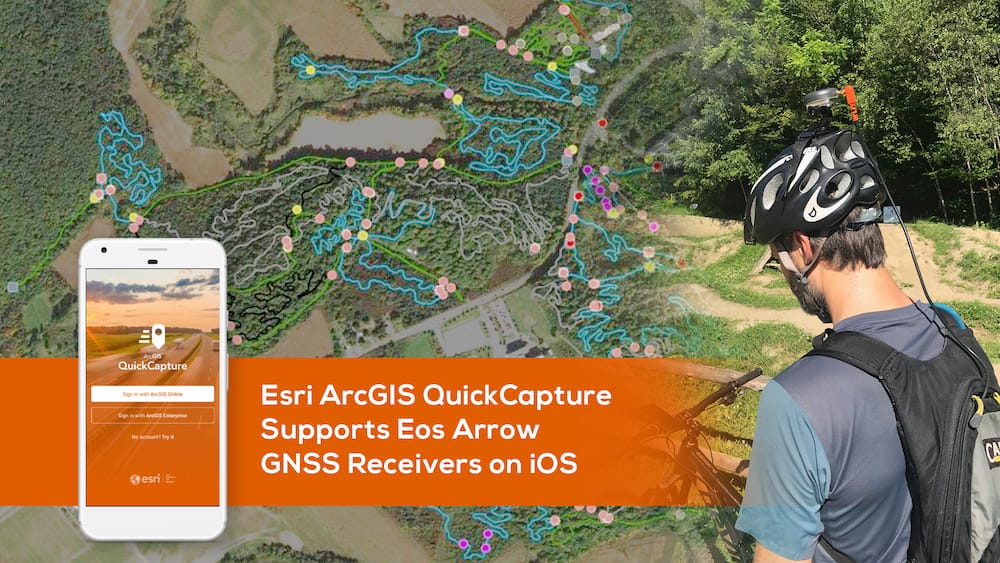TERREBONNE, QC, CANADA — Eos Positioning Systems, Inc. (Eos), a manufacturer of high-accuracy Arrow GNSS receivers for GIS users and field mappers, announced that Esri’s ArcGIS QuickCapture GNSS receiver support includes all Arrow Series™ models for iOS, Android and Windows.
“We are extremely pleased to support the Arrow GNSS receivers in ArcGIS QuickCapture on all mobile operating systems, including iOS,” Esri Senior Product Manager Ismael Chivite said in a press release. “Having confidence in your location accuracy is critical when capturing data rapidly.”
ArcGIS QuickCapture is described as Esri’s simple, high-productivity rapid-data collection mobile app. Users in the office configure simple interfaces before data-capture begins, so that users in the field need only to tap large buttons, initiating the capture of feature categories (e.g., points, lines, polygons) loaded with pre-configured attributes. The app is designed to simplify data capture from moving vehicles (e.g., pavement quality, debris), airplanes (e.g., right-of-way infractions, vegetation overgrowth) and more.
“Its minimalist user experience allows field crews to capture data with minimum interaction, so attention can be kept to what matters most,” Chivite said.
Arrow GNSS receivers provide survey-grade accuracy to ArcGIS QuickCapture as frequently as 10 (or 50Hz)positions per second.
“We are amazed at the applications so far,” Eos CTO Jean-Yves Lauture said. “Customers are using this to map sidewalk conditions, bicycle and ATV trail mapping, they are using it with Go-Pros cameras. We are excited to see the use cases proliferate.”
Velo Quebec, a Canadian non-profit organization focusing on promoting bicycle use, is using ArcGIS QuickCapture and Arrow 100 GNSS receivers to quickly and accurately map mountain-bike trail networks. The user-friendly technology eliminated complex GPS training and manual, spreadsheet-based data entry.
“Before this app came along, our project required complicated GPS training, Excel spreadsheets, and manual data entry, which was time-consuming and potentially error-inducing,” Velo Quebec Mountain Bike Program Manager Francis Tétrault said. “It was a heavy process.”
Because the new technology is easy to use, Velo Quebec anticipates training land managers to collect their own data in the future. Information such as trailheads, bridges, difficulty level, surface type, and the tight and twisty single-track trails themselves will be available for cyclists as well as land managers.
“The bottom line is, we’re now equipped with a simple solution that’s easy to set up, easy to use and that provides us with data of much greater quality than before,” Tétrault said. “Our partners and land managers are thrilled they can get their hands on quality data at little to no cost, and this data will help them manage their trail systems in a more efficient way.”





